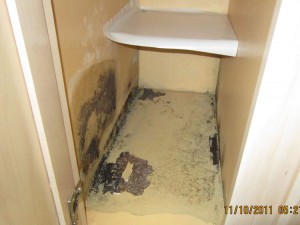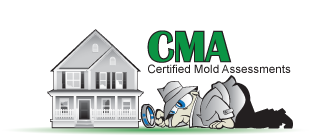 Most people know that mold is not something you want hanging around the house. After all, when a minor mold problem is left unchecked, it might become a major mold problem. The colony expands deep into the walls, floors and ceilings. Cleaning is no longer an option. Professionals have to remove and dispose of infected materials in order to solve the problem, and this sends your costs through the roof. A solid strategy for preventing and addressing mold issues is the best way to avoid this type of scenario.
Most people know that mold is not something you want hanging around the house. After all, when a minor mold problem is left unchecked, it might become a major mold problem. The colony expands deep into the walls, floors and ceilings. Cleaning is no longer an option. Professionals have to remove and dispose of infected materials in order to solve the problem, and this sends your costs through the roof. A solid strategy for preventing and addressing mold issues is the best way to avoid this type of scenario.
But did you know that mold can be costly in a number of other ways? Take a look at the following list of relatively unknown mold risks. Once you’re aware of just how troublesome mold can be to your and your family, you won’t think twice about putting effective mold prevention and remediation measures into place!
1. Risks to your (and your family’s) health
If you read what government agencies like the CDC have to say about the health risks of mold, you’ll probably find a long list of potential problems you’ve never considered. Of course mold can wreak havoc on your sinuses, ears and throat—but it can also lead to mental cloudiness and fatigue. In severe cases, it can even damage the brain.
The trick thing about many of these symptoms is that they sneak up on you. It can be difficult to realize that you’re actually feeling cloudy or tired because of the mold spores you’re breathing, and by the time you realize what’s going on, your house is seriously infested with mold. People are often amazed at how much their health improves once a mold problem has been professionally dealt with. The bottom line is that it’s very difficult to be at your best when your body is under constant attack from mold.
2. Furniture and upholstery
Don’t think that walls and floors are the only aspects of your property at risk. Mold can also wreak havoc on furniture and upholstery. Expensive living room sets can be ruined by mold, as can designer curtains and other significant investments. Given the right conditions, mold can easily colonize these materials to the point of no return. Once mold reaches a critical threshold, it cannot be cleaned. The infested material has to be done away with in order to protect the rest of the home.
3. Property stigma
Another thing many people don’t realize is that once a home has been subject to professional mold remediation (especially if the problem was severe), a stigma can develop with respect to the property. In many U.S. States, homeowners are required to disclose mold activity to realtors and potential buyers. Serious mold events have a way of reducing your market value, even if you hired a professional mold removal company to resolve the situation. Property stigma is one of the most compelling reasons to consult the pros about mold prevention.
Keeping your home ahead of the curve
The list of possible risks and costs of a serious mold problem is indeed longer than most people realize. So how do you protect your home and your family from these risks? First, it’s crucial to understand how mold grows, and what conditions it needs in order to thrive. If you’ve never considered the possibility that mold may be growing in your home, professional mold testing may be in order. But no matter what your situation, it’s always smart to survey your home regularly and make sure you have a solid mold prevention strategy in place.
Thanks for reading, and we appreciate any comments or questions you might have!

